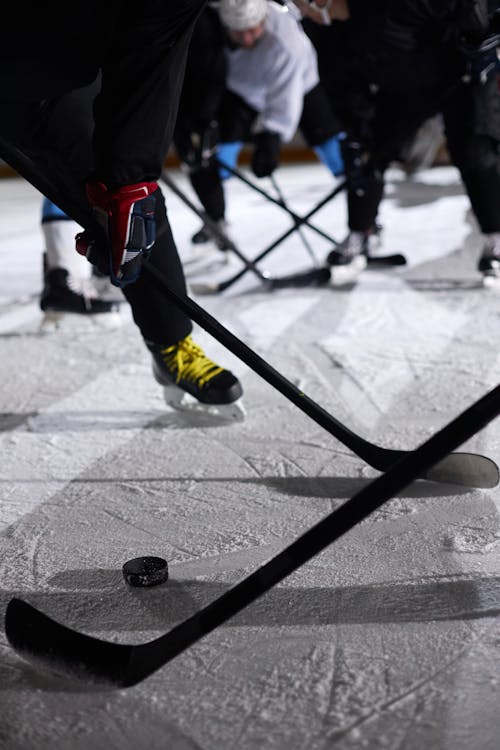How Many Hockey Players Are on a Team in the NHL?
If you've ever wondered how many hockey players are on a team, you're not alone. Ice hockey is an international sport with teams varying in size from nine to twenty-three. And if you want to know how many players are on a team in the NHL, read on! You'll discover the typical roster size for an NHL team, as well as the rules for female hockey and field hockey.
NHL teams are allowed to have up to 23 players
NHL teams are allowed to carry up to 23 players on their active roster, but they are also able to call up four players from the AHL in case of an emergency. The NHL trade deadline occurs in early March, but teams can have as many as 23 players on their active roster at any given time. However, most teams do not want to add players all the time, as they have concerns about salary capital.
The number of players on an NHL team's active roster is limited by its contractual limit. Every team can only have 50 players on its active roster, including two goalies and eighteen skaters. The limit can be raised at the trade deadline. There is no minimum roster size for the league, and teams can have as few as 18 skaters and two goalies. A team can have as many as 23 players on its active roster if it is interested in making a trade.
Field hockey is played primarily by females
Field hockey is an Olympic sport introduced to the London Olympics in 1908. It is a team sport, played both by males and females. In the men's tournament, 12 teams compete, while eight teams participate in the women's competition. The Netherlands has won the most gold medals in Olympic field hockey. Players are known for their excellent passing, goaltending, and defensive skills. Here are some interesting facts about the sport.
Although field hockey is not as popular as soccer, it is still widely played. In the Netherlands, India, and Australia, it is particularly popular, with the sport being played on a more international level. Other countries with competitive teams include Germany, Spain, and England. While not a highly publicized sport, field hockey has been plagued by a lack of funding and popularity. As a result, some people see it as a sport geared towards the wealthy, and elitist.
Ice hockey is an international sport
Ice hockey is an internationally popular winter sport. It originated in Canada in the 1870s. The first game was played indoors in Montreal on March 3, 1875. The sport has evolved since then, but some characteristics remain the same. Professional ice hockey emerged around 1900, and amateur leagues developed in the 1880s. The Stanley Cup represents ice hockey club supremacy. The first Stanley Cup was awarded in 1893 to the Canadian amateur champion. Later, it became the championship trophy of the National Hockey League.
Since 1920, ice hockey has been part of the Winter Olympics. Since 1920, the sport has become one of the most popular winter sports, televised throughout North America. Since that time, Canada has won six of the first seven gold medals at the Winter Olympics. The Soviet Union won all but two gold medals, including the Olympics, in the 1960s. The Canadians also won the first Winter Olympics in Sochi.
Typical roster size
During the regular season, the NHL allows for a maximum roster size of 23 players. NHL teams may also carry up to ninety players on their reserve list. Teams may also call up unsigned players if a player becomes injured and is unable to play. However, most NHL teams do not wish to add players on a constant basis due to concerns over salary capital. Therefore, the typical NHL roster size is twelve forwards and six defensemen.
Each league has different rules and regulations for roster sizes. For youth teams, the most important is the age group. Players are generally placed into age groups according to their weight and birthday. In general, NHL teams have twenty-two players on their roster. In case of injuries or unforeseen circumstances, coaches are likely to add an alternate player. Typically, these players play twenty to thirty games in a season. As a result, a typical NHL roster size is 23 players.
Penalties for too many players on the ice
When one team has too many hockey players on the ice, referees stop the game and look at the previous video footage. There is no specific hand signal for this rule, but if there are six players on the ice, that team will receive a bench minor penalty. Players who just came on the ice are considered extra skaters. So, if you see a team with six players on the ice, that is the number of players that may be on the ice.
Too Many Men is a common penalty in ice hockey, where teams have more than the required number of players on the ice. The maximum number of players on a team is six, including the goalie. It's used even in women's ice hockey, where substitute players are replaced with players. Penalties for too many hockey players on the ice are usually two minutes in the penalty box, but the penalty can be assessed to anyone on the ice.

Comments
Post a Comment